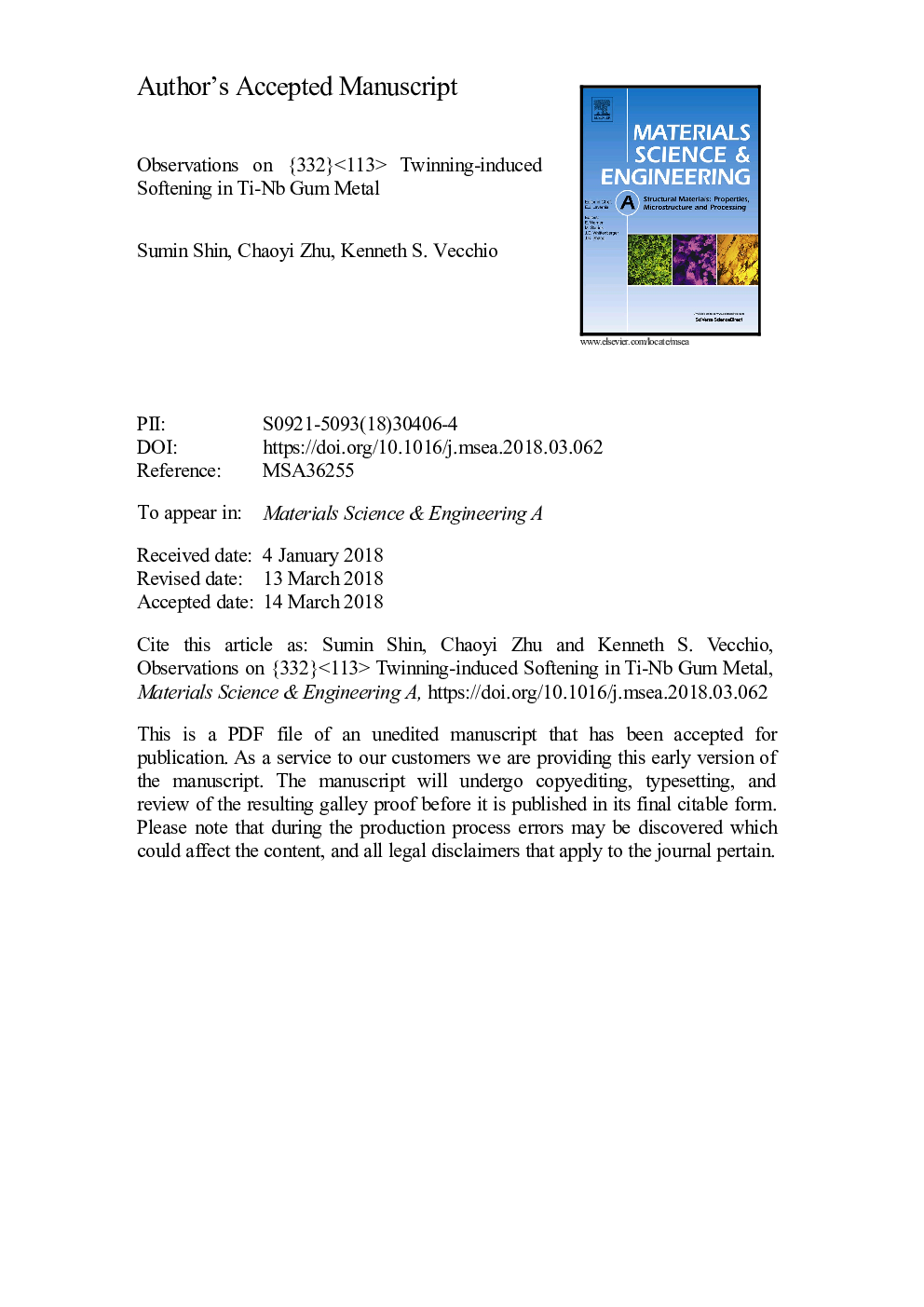| Article ID | Journal | Published Year | Pages | File Type |
|---|---|---|---|---|
| 7972470 | Materials Science and Engineering: A | 2018 | 27 Pages |
Abstract
Thermomechanical-cycling processes were applied to a metastable Ti-23Nb-0.7Ta-2Zr-1.0O (at%) alloy to control a volume fraction of mechanical twins, resulting from activation of twinning-induced plasticity effects. Analysis of the microstructure features designed using electron backscattering and X-ray diffraction revealed the deformation bands induced by the cycling process were characterized as only {332}<â¯113â¯>β twinning. It was also observed that the fraction of twins was significantly increased with increasing the number of the cycles in the process, resulting in a pronounced softening effect. To shed a light on the relevant micro-scale features (e.g., geometric orientation and stress concentrations) responsible for the microstructure evolution and mechanical response, the local Schmid factor of grains and geometrically-necessary dislocation densities were evaluated from experimentally observed results, and correlated with deformation twinning. A good correlation between the local geometric Schmid factor and softening behavior, due to texture evolution within twins was established, as well as the effect of local stress concentrations on microstructure evolution of this Ti-Nb Gum metal. Significant decrease in micro-hardness (approximately 18% from untwinned structure) was achieved by highly twinned structure, and a possible deformation mechanism was established to enhance ductility without evident elastic properties variation in metastable β Ti alloys.
Keywords
Related Topics
Physical Sciences and Engineering
Materials Science
Materials Science (General)
Authors
Sumin Shin, Chaoyi Zhu, Kenneth S. Vecchio,
